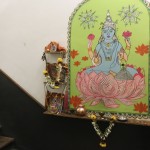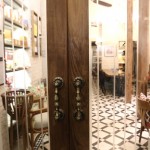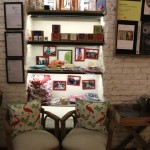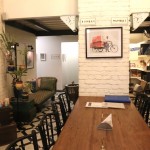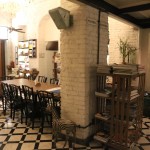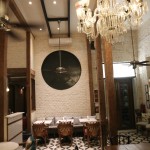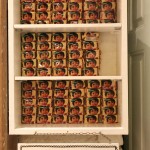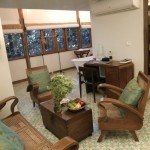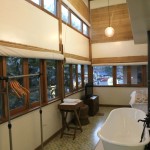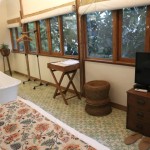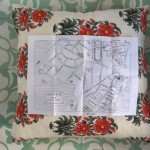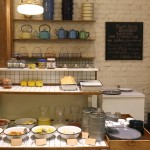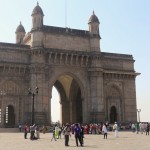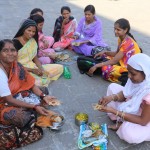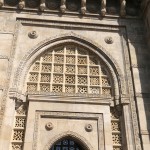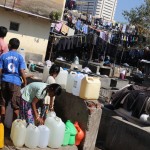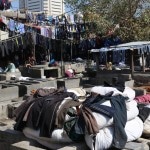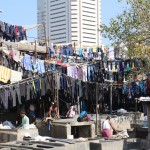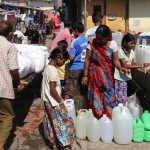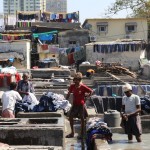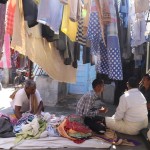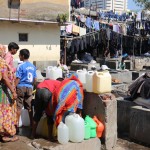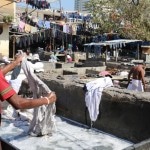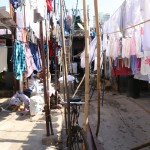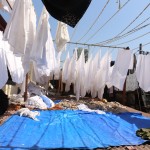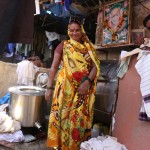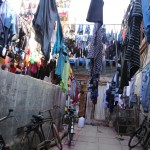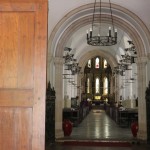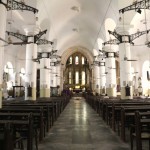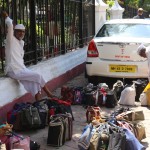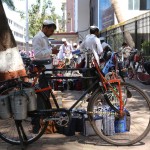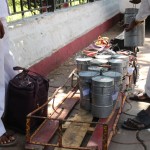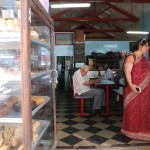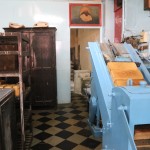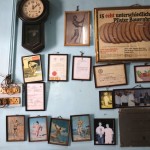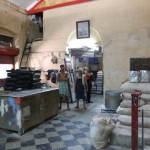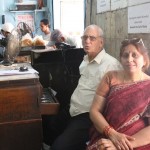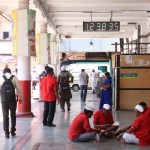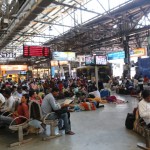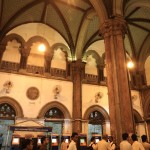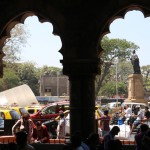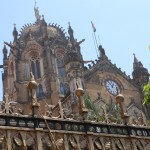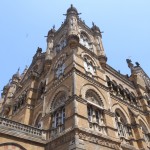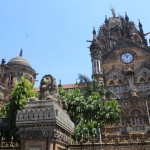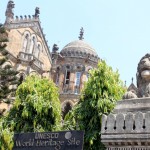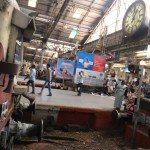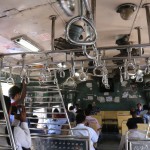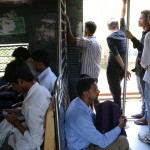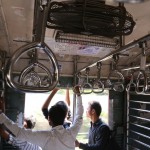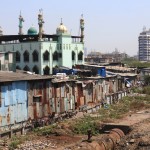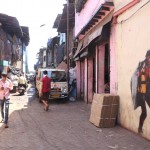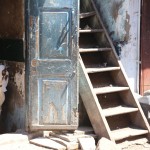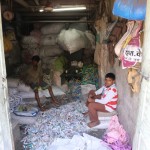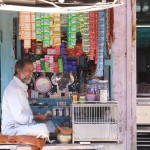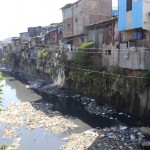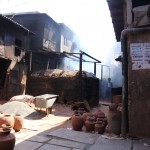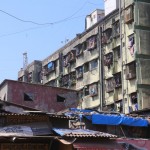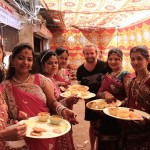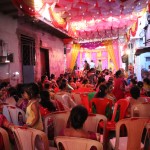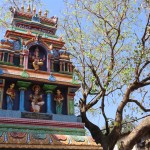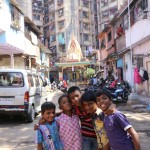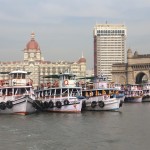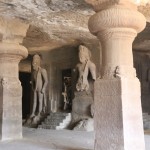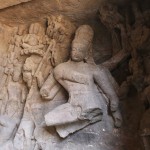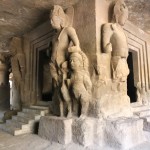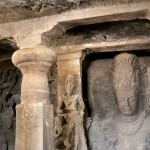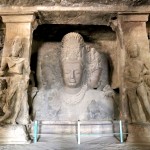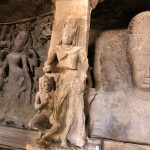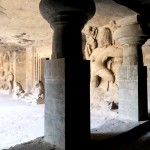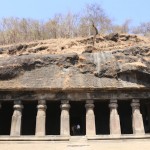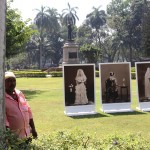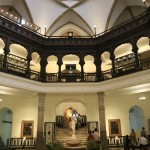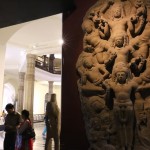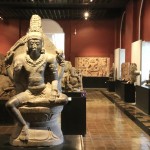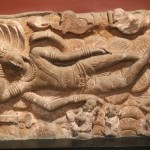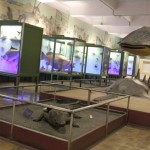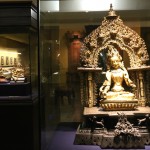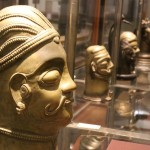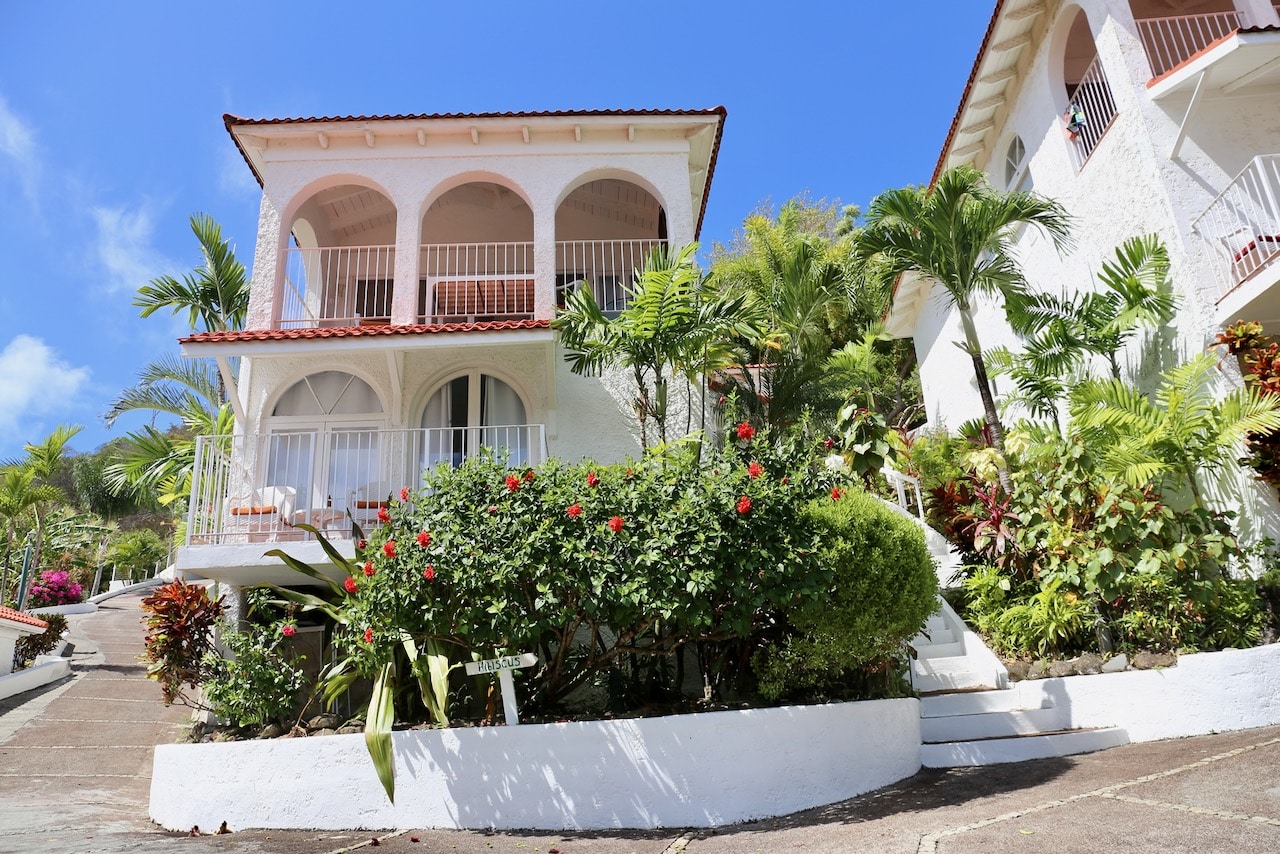First impressions of Mumbai tend to be dominated by its chronic shortages of space. Crammed onto a narrow spit of land that curls from the swamp-ridden coast into the Arabian Sea, the city is technically an island, connected to the mainland by bridges and narrow causeways. In less than five hundred years, it has metamorphosed from an aboriginal fishing settlement into a megalopolis of more than sixteen million people – India’s largest city and one of the biggest urban sprawls on the planet.
Travellers tend to regard time spent here as a rite of passage to be survived rather than savoured. I have to admit I was a bit nervous about enduring the city’s intensity but after spending four days exploring the city on the solo I was happy to encounter a playful and carefree urban landscape. From the artsy boutique vibe in Colaba to the colourful Dharavi Slum…you’re bound to fall in love with the many faces of Mumbai. Just sit back, relax and enjoy Bollywood beats while uncovering the city’s hidden gems.
The Adobe Hotel
Mumbai’s main tourist enclave is the district of Colaba, at the far southern end of the peninsula. As the home of the super-swanky Taj Mahal Palace, as well as some of the city’s trendiest bars and restaurants, Colaba certainly has its glamorous side. During my visit I was pleased to rest my head at the city’s only luxury boutique property, The Abode Hotel, ideally located a stones throw from The Gateway to India and Prince of Wales Museum.
Abode is fabulously unconventional in its individuality and style. Twenty elegantly appointed rooms feature carefully restored vintage furniture, original artworks and sumptuous bedding. 20th Century colonial and art deco pieces have been sourced from Bombay’s second hand markets and lovingly restored for the hotel. Custom-built furniture includes bed side tables made from chaat stands and library shelves inspired by Bombay roadside bookstores. Bedroom light fittings have been created using hand-thrown ceramic lampshades, turned hardwood lamp holders and neon. Fabrics used for soft furnishings have been sourced from vintage saris, local markets or handwoven by the charitable organization WomenWeave. The hotel’s top notch suite is worth the splurge featuring sky-high ceiling, antique soak tub and wrap around windows which offer a birds eye view of the bustling neighbourhood below.
Each morning guests gather in the hotel’s colourful lobby for a complimentary breakfast. I begin each day sipping on spicy Chai and nibbling through poached eggs topped with fragrant masala while chatting with my fellow travellers. It feels like I’m sitting in someones home and I’m thrilled for the social atmosphere which has me wondering if the Abode has perfected hosteling for grownups.
The hotel shines brightest as a leader in social responsibility. Its extensive “give back” programs are designed to allow travellers to easily contribute to the community and feel like a local. The Abode team have proven themselves in this arena by selling a colourful array of locally produced trinkets in their gift shop which support local NGOs, investing in reduced energy consumption technologies, empowering local women by working with a women run taxi company (whose drivers are in many cases single mothers and the sole earners in their family) and working with a school for the blind to introduce guests to fantastic massage therapists. One feels good calling the Abode their home sweet home in Mumbai.
Sips & Nibbles
Indulge in the ultimate Brit inspired decadence via High Tea at the Taj. Feast like a King a with gold encrusted utensils at posh Ziya at the Oberoi. Kick back and watch a cricket match with a pack of local fans at funky Colaba Social.
Dhobi Ghat
I start my tour of Mumbai at the city’s most unusual attraction, Dhobi Ghat at Cuffee Parade and Mahalaxmi. Dhobit Ghat refers to the open air laundromats in Mumbai where washers, locally known as Dhobis, work in the open to wash the clothes and linens from local hotels, hospitals and households. The city’s most famous at Mahalaxmi offers a brilliant view of the operation but if you want to get up close and personal, dashing through suds and meeting with locals head to the lesser known Cuffee Parade location as you get a much better sense of how things work here.
Dhobi is actually a specific caste group, families who specialize in the washing of clothes. Upon further inspection one notices the Dhobi Ghat is far more than just a massive al fresco laundry facility but actually a functioning community home to an elementary school, barbershop and restaurant. A visit to Dhobi Ghat certainly makes laundry day a magical one.
Churchgate Station
On our next stop I continue to be amazed by Mumbai’s quirky offerings, which perfectly showcase how a city of 16 million go about their day to day lives. I’m transplanted from a massive laundry village to bustling Churchgate Station where everyday at 11:20am hundreds of men on bicycles deliver the city’s lunch boxes.
Mumbai’s size and inconvenient shape create all kinds of hassles for its working population. One thing the daily tidal wave of commuters does not have to worry about, however, is where to find an inexpensive and wholesome home-cooked lunch. The members of the Nutan Mumbai Tiffin Box Suppliers Charity Trust, known colloquially as dabawallahs, see to that. Every day, around 5000 dabawallahs deliver freshly cooked meals to 200,000 suburban kitchens to offices in the downtown area. Each is prepared early morning by a wife or mother while her husband or son is enduring the crush on the train. She arranges the rice, dhal, subzi, curd and parathas into cylindrical aluminium trays, stacks them on top of one another and clips them together with a neat little handle.
You May Also Enjoy Reading…
- Exploring Kerala’s Historic Cochin
- 48 Hours in Agra
- A First Timers Guide to Doing Delhi
- Experience Indian Festivals on a Holiday Trip
- Best Places to Visit in Goa
The tiffin box is the linchpin of the whole operation. When the runner calls to collect it in the morning, he uses a special colour code on the lid to tell him where the lunch has to go. At the end of his round, all the boxes are carried to the nearest railway station and handed over to other dabawallahs for the trip into town. Between leaving the cook and reaching its final destination, the tiffin box will pass through at least half a dozen different pairs of hands, carried on heads, shoulder-poles, bicycle handlebars and in the brightly decorated handcarts that glide through midday traffic.
It took me a while to wrap my head around the operation. I couldn’t understand why someone would pay to have their own food delivered to them at work. My guide took a moment to explain how crammed the trains are into the city in the morning and how it would be impossible for everyone to carry their own lunch onto the train. I asked, “but why don’t they just order takeout or leave the office and dine at a local restaurant.” She explained with a glimmer in her eye, “Mumbai’s middle class can’t afford to eat out every day at work, and they largely prefer a home-cooked meal. The dabawallahs offer an affordable service which has been running for over 100 years. It’s the only operation of its kind in the world. Thousands of lovingly prepared lunches traveling across the city.” It’s sort of romantic, right?
St Thomas’ Cathedral
Just west of Horniman Circle stands the diminutive St Thomas’ Cathedral, believed to be the oldest British building in Mumbai; blending Classical and Gothic styles. It opened on Christmas Day in 1718, complete with an essential “cannonball-proof roof.” In those days, the seating was divided into useful sections for those who should know their place, including one for Inferior Women. The whitewashed and polished brass-and-wood interior looks much the same as it did in the eighteenth century. Walk towards the front of the cathedral and you’ll find three impressive seats which have been enshrined with wee plaques to honour esteemed guests; two elegant armchairs for King George and Queen Mary and a humble pew for Mother Teresa.
Yazdani Bakery
After whisking your way through St Thomas skip down the street for a sip and nibble at one of the city’s most adored institutions. Yazdani Bakery is run by a hilarious Zarastrian family who originally immigrated to Mumbai from Iran. The owner constantly has a twinkle in his eyes, making jokes about the weather and traffic while sitting on a stool perched over his cash register. He stands tall to give me a tour of his beloved institution, waving at a wall covered in vintage wrestling portraits. He chirps, “my family come from a long line of celebrated wrestlers,” beating his chest proudly. I take a quick tour of the expansive bakers kitchen where an army of men leaven bread and cut cake early in the morn each day, surrounded by flaming wood fired ovens. I take a moment to pause, sipping on a sweet cup of Chai while nibbling on carrot cake and a slice of the Yazdani’s signature sweet bread which arrives on a plate slathered with creamy ghee.
Victoria Terminus
The city’s most beautiful landmark is without a doubt the Victoria Terminus, Mumbai’s main train station. Inspired by St Pancras Station in London, F.W. Stevens designed Victoria Terminus as a paean to progress. Built in 1887 as the largest British edifice in India, it’s an extraordinary amalgam of domes, spires, Corinthian columns and minarets. In keeping with the current re-Indianization of the city’s roads and buildings, this icon of British imperial architecture has been renamed Chhatrapati Shivaji Terminus (try saying that 10 times fast).
Few of the two million or so passengers who fill almost a thousand trains every day notice the mass of decorative detail. A British lion and Indian tiger stand guard at the entrance, and the exterior is festooned with sculptures, among them are grotesque mystical beasts, monkeys, plants and medallions of important personages.
I wandered around the terminal for some time, a fantastic spot to people watch and stare up into the stained glass heavens before hopping on a train bound for Mumbai’s storied slums.
Dharavi Slum
Sprawling over 550 acres, the Dharavi Slum’s maze of dilapidated shacks and narrow, stinking alleyways is home to more than a million people. An average of 15,000 of them share a single toilet. Infectious diseases such as dysentery, malaria and hepatitis are rife; and there aren’t any hospitals.
Despite the poverty, Dharvi has been described as “one of the most inspired economic models in Asia”: hidden amid the warren ramshackle huts and squalid open sewers are an estimated fifteen thousand single-room factories, employing around a quarter of a million people and turning over a staggering US$1 billion annually. The majority of small businesses in Dharavi are based on waste recycling. Slum residents young and old scavenge materials from across the city and haul them back in huge bundles to be reprocessed. Aluminum cans are melted down, soap scraps salvaged from schools and hotels are reduced in huge vats, leather reworked, discarded plastic reshaped and remoulded.
As India’s most iconic slum, Dharavi has also found an unlikely niche in the history of cinema. The district provided many of the settings for Danny Boyle’s multiple-Oscar-winning Slumdog Millionaire, as well as several of its leading child actors. During our visit my guide was advised that seven weddings were taking place that day in the slum, evidenced by the fact that many shops were empty and the particular day was an auspicious one. I was thrilled to have the opportunity to take part in one of these weddings, ducking under a celebratory tent to be greeted by a choir of sari adorned tweens who were eager to have their picture taken with me. To feel famous for but a day…
Elephant Island
Mumbai’s most popular day trip for those looking to get out of the city undoubtedly starts with an hour long ferry ride to Elephant Island. Populated only by a small fishing community, it was originally known as Gherapura, the “city of Ghara priests”, until the island was renamed in the sixteenth century by the Portuguese in honour of the carved elephant they found at the port. Its chief attraction is its unique cave temple, whose massive Trimurti (three-faced) Shiva sculpture is as fine an example of Hindu architecture as you’ll find anywhere.
Elephant Island’s impressive excavated eighth-century cave, covering an area of approximately 5000 square metres, is reached by climbing more than one hundred steps lined by souvenir vendors (who all sell the exact same thing), to the top of a hill. Inside, the massive columns, carved from solid rock, give the deceptive impression of being structural. Elephanta’s cave system is the perfect place to linger and loiter, stepping back in time while straddling the present in an attempt at avoiding pesky monkeys who are all to happy to snatch your phone, camera or water bottle.
The Prince of Wales Museum
The Prince of Wales Museum, recently renamed “Chhatrapati Shivaji Maharaj Vastu Sangrahalaya” (try saying that 10 times fast), is ranked among the city’s most distinctive Raj-era constructions. It stands rather grandly in its own gardens, crowned by a massive white Mughal-style dome, beneath which one of India’s finest collections of paintings and sculpture is arranged on three floors.
Highlights of the museum include fifth century stucco Buddhist figures, a massive hall filled with taxidermy tiger, flamingo and lion, Indian paintings which include works from the Mughal emperors’ private collections, Medieval miniatures, grisly weapons and pieces of armour, a large collection of ancient Indian coins and vast array of Oriental ceramics and glassware.
You May Also Enjoy Reading…
A First Timers Guide to Doing Delhi
Celebrating India’s Colourful Holi Festival
Exploring Kerala’s Historic Cochin
